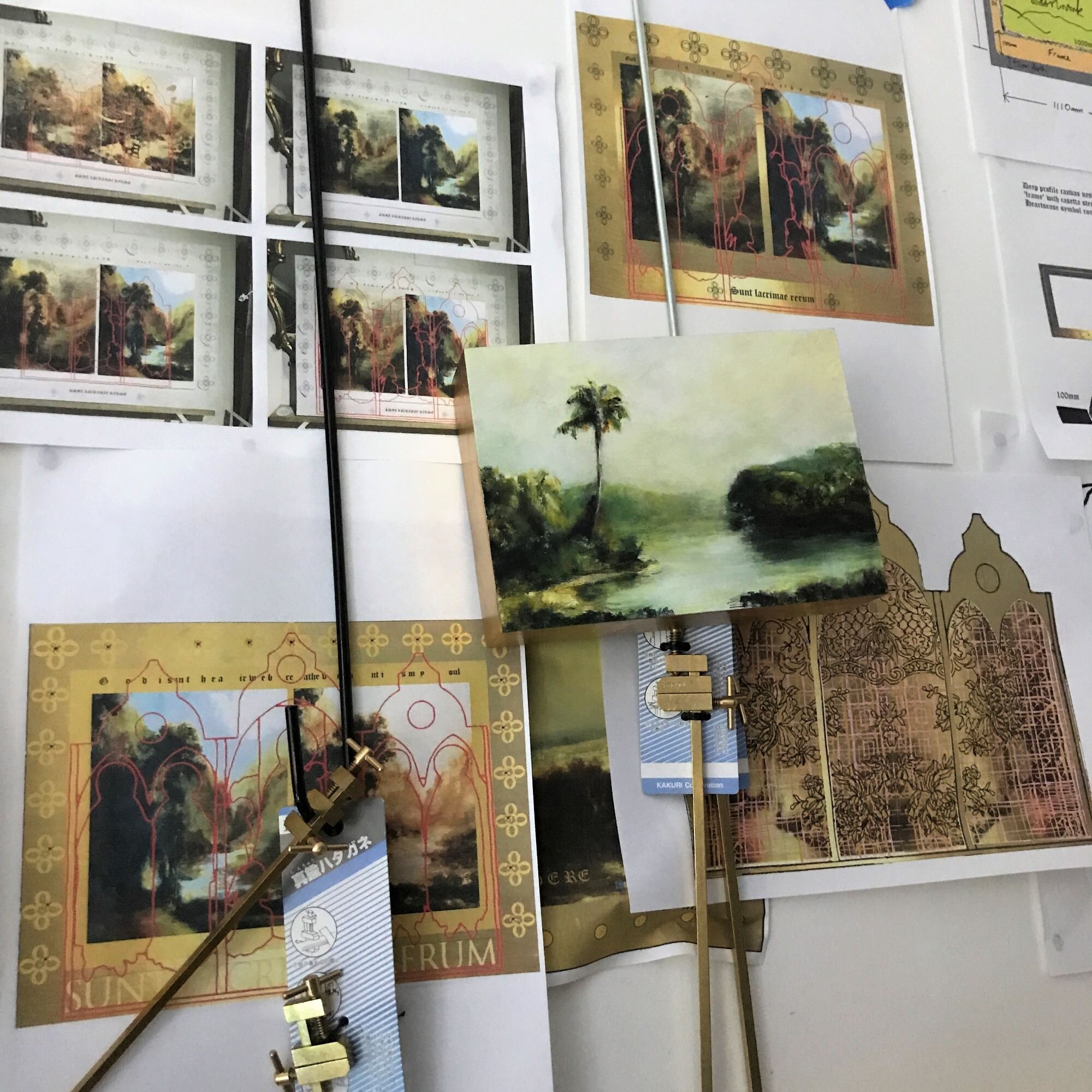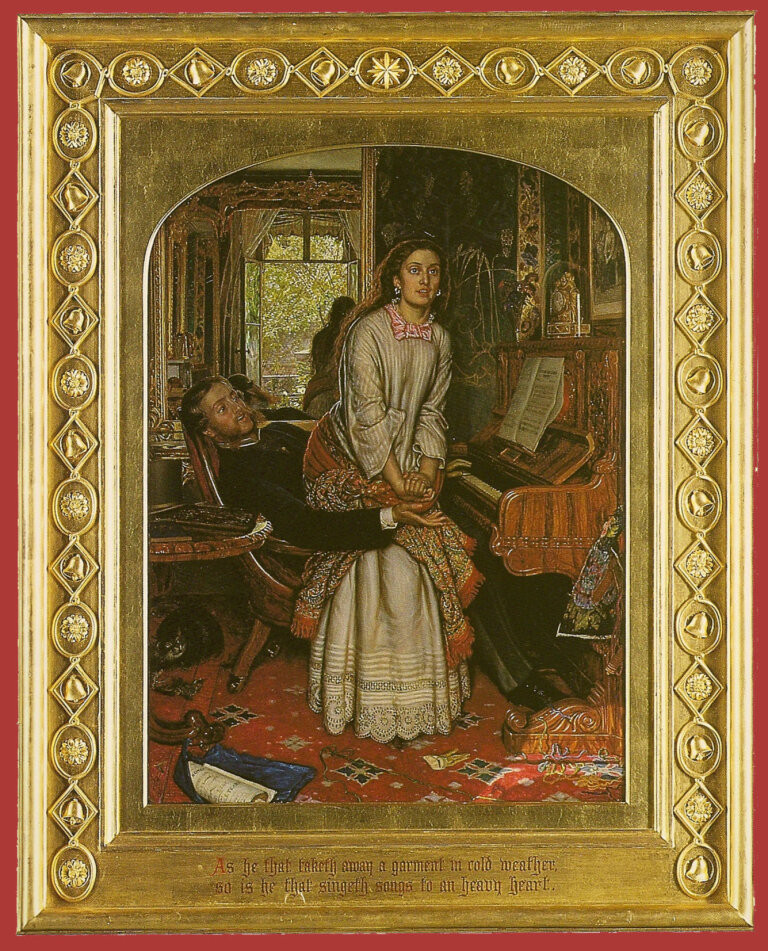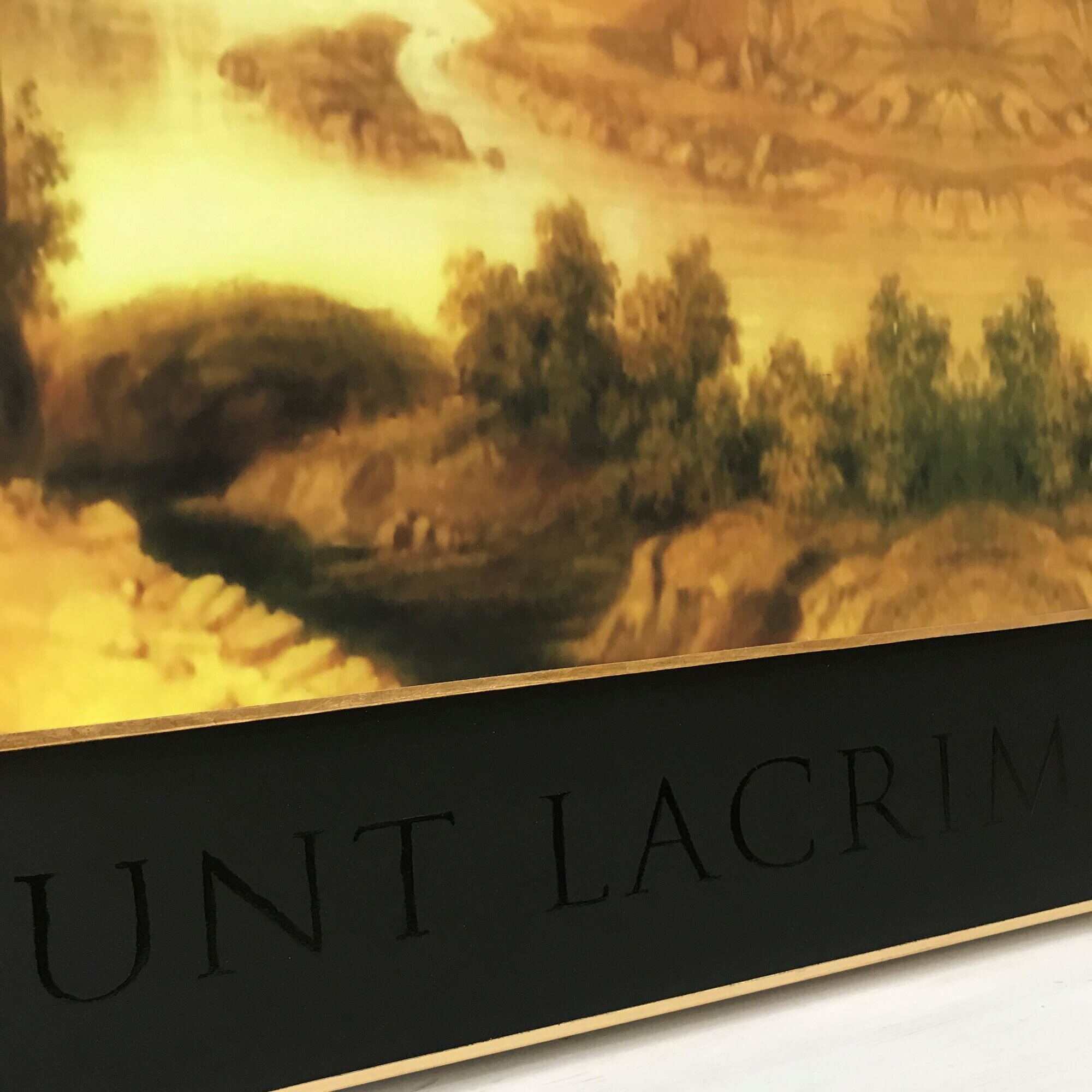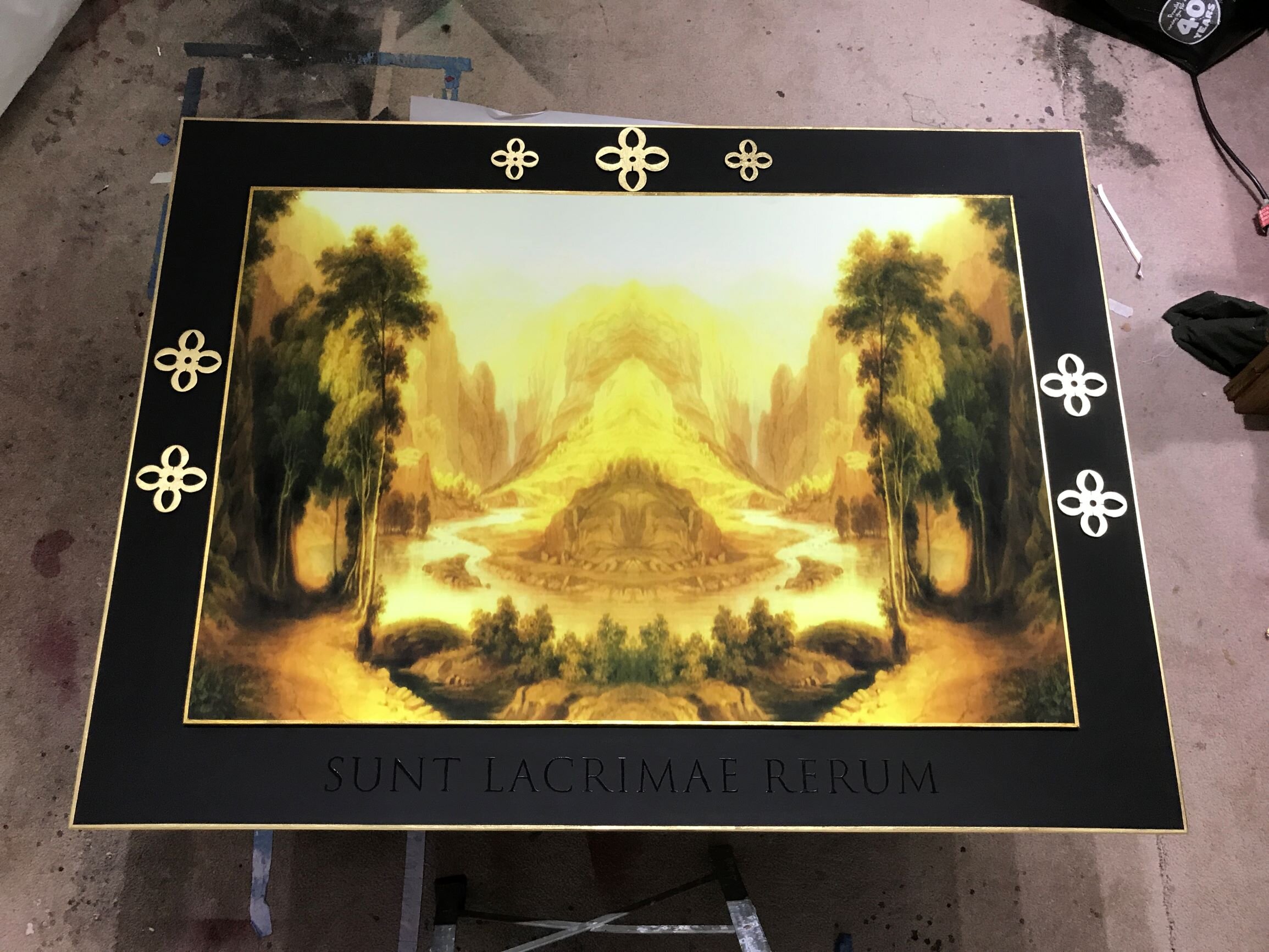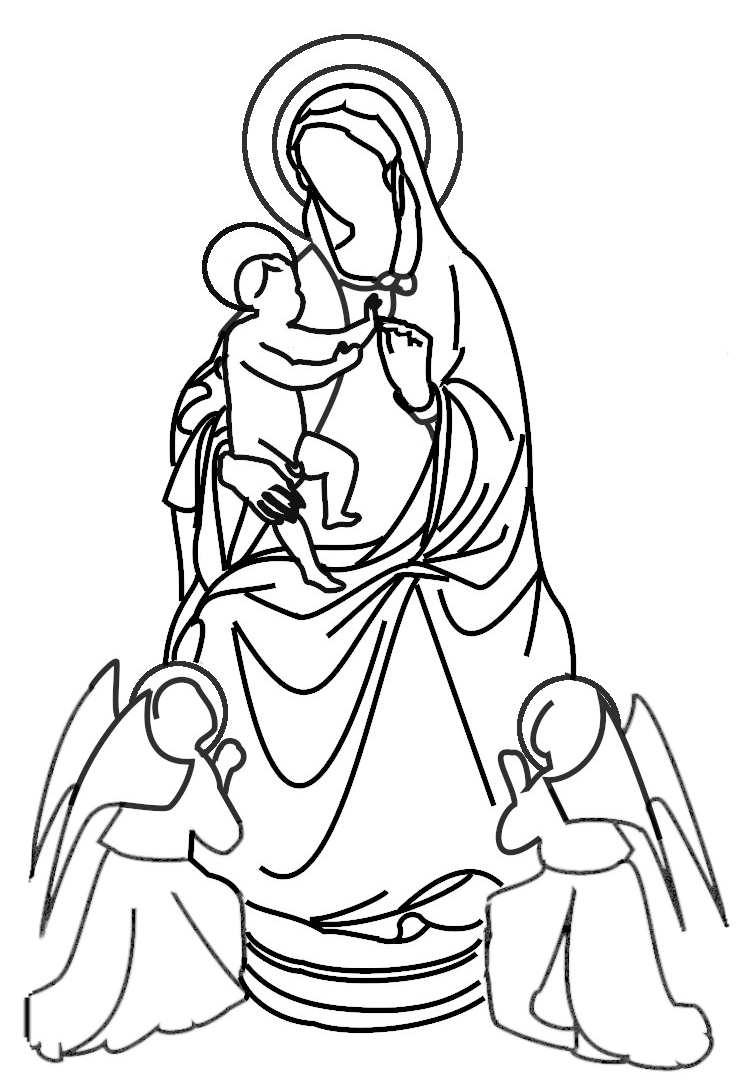Holman Hunt, The Scapegoat 1851-56. Seeing this, reading this, changed everything
Holman Hunt frame detail, “Heartsease” carving on frame rhs
I made this sketch & everything that follows on from here documents my search to find it materially, to make it so I could see what it looked like
Max Gimblett at Gow Langsford gallery. Sydney Contemporary 2013. I only remembered him after I’d made my ornaments
But after I’d remember him I went on to elaborate on my ornaments
See more about them here
Mortimer Menpes, Burmese village, oil on board circa 1904
Sunt Lacrimae Rerum
“A phrase in the first book of Virgil’s Aeneid has fascinated writers, academics, and thinkers down through the ages: lacrimae rerum. It could be translated as “the tears of things.”
In a passage which Borges described as an “almost magical event” (Book 1, verse 462), standing in a temple to the goddess Juno in Carthage, the Trojan hero, Aeneas, observed a mural on which was represented the long ago battle of Troy. Watching his ancestors and compatriots struggling and losing their lives in the legendary Trojan War, the hero finally exclaimed: “sunt lacrimae rerum et mentem mortalia tangent.” “There are tears of things, and mortal matters touch the mind.”
Scholars of the Aeneid provide two possible translations for the phrase: “the tears of things” or, the much less poetic and sterile, “tears for things.” The temptation to interpret the phrase according to that first interpretation has led poets of the stature of the Irishman, Seamus Heaney, to translate the legendary verse as “There are tears at the heart of things.” This possible reading opens up, then, a series of possibilities for the poetic as well as for melancholic implications.
Similar to the Japanese concept of mono no aware, (a sadness of things), this possible translation of lacrimae rerum speaks of a personified material universe which accompanies us, suffers with us and is even capable of pouring out the purest materialization of human sadness, in tears. The idea also approaches the age-old concept of anima mundi; namely, the “soul of the world.”
The mysterious ambivalence in Virgil’s phrase, perhaps intentional, richly fills the poetic verses of the Aeneid, likely some of the most beautiful and meaningful lines in all of Latin poetry. Source
“ The idea that things suffer with us – that there are tears of things, tears of time and tears of the universe – endows something of our existence and even our relationship with the universe with a magical and solemn dignity. In the end, the possibility is put forward that the cosmos accompanies us in these moments, the most difficult of our lives.”
Shakespeare referenced “Heartsease” in his plays, Hamlet and Midsummer Night’s Dream, as a symbol of thought and to inspire love when the juice of a Pansy flower was laid upon the eyelids of a sleeping person. The name Pansy may have come from the French "pensee", meaning “thought” as the French believed a Pansy could make your lover think of you
“It is not a view of untamed Nature or a conventional treatment of the picturesque, but it is a landscape nonetheless – a landscape with which we can all identify, but feel as though we are seeing it for the first time.”
Got stuck here
Psalms 121 1: I lift up my eyes to the hills-- where does my help come from? My help comes from the Lord, the Maker of heaven and earth
Looks crooked but I fixed that
Light a candle. Maybe the bravest thing to do right now is to just sit, and have faith

























